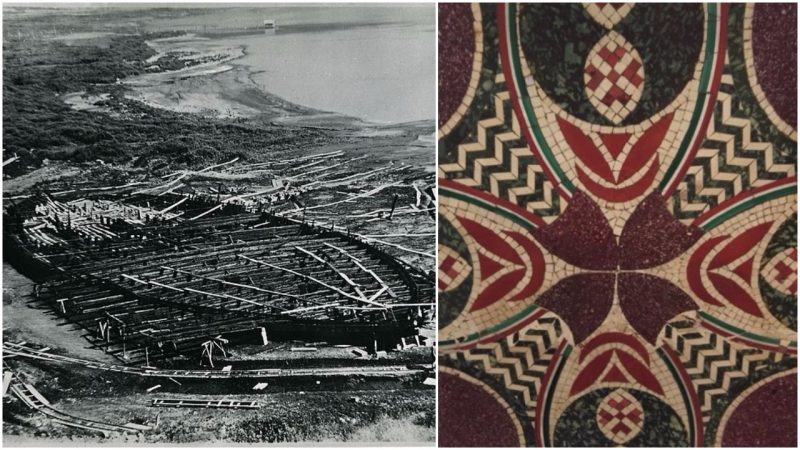It was recently revealed that a large piece of marble mosaic that was part of a pleasure barge built for Caligula, a 1st century AD Roman emperor famous for his cruelties, has served as a coffee table in the Park Avenue home of a New York City antiques dealer. “It was our favorite piece and we had it for 45 years,” Helen Fioratti said.
The Italian government, though, had other ideas.
The multi-colored mosaic was removed from the Fioratti home and is now back in Italy. It was once proudly displayed in an art museum devoted to Caligula’s ships financed by Benito Mussolini, but the mosaic disappeared from the museum either before or during World War II. (The museum burned to the ground in 1944.) Fioratti said she and her husband, journalist Nereo Fioratti, bought the mosaic from an aristocratic Italian family in the late 1960s. The sale was facilitated by an Italian police officer, she said. “This was an innocent purchase,” Fioratti told NBC.
The Manhattan district attorney’s office seized the mosaic as part of an initiative to return stolen Italian artifacts found in the U.S., using evidence supplied by art experts and the Carabinieri police force of Italy, specialists in hunting for artifacts. Other pieces have been returned as well, including ancient coins, books, and even an Apulian red-figure vessel dated to around 350 B.C. which was found at the Metropolitan Museum of Art.
“Returning long lost relics to their rightful owners is at the core of my Office’s mission to end the looting of rare cultural treasures and trafficking of stolen antiquities,” said District Attorney Cyrus Vance. “These items may be beautiful, storied, and immensely valuable to collectors, but willfully disregarding the provenance of an item is effectively offering tacit approval of a harmful practice that is, fundamentally, criminal.”
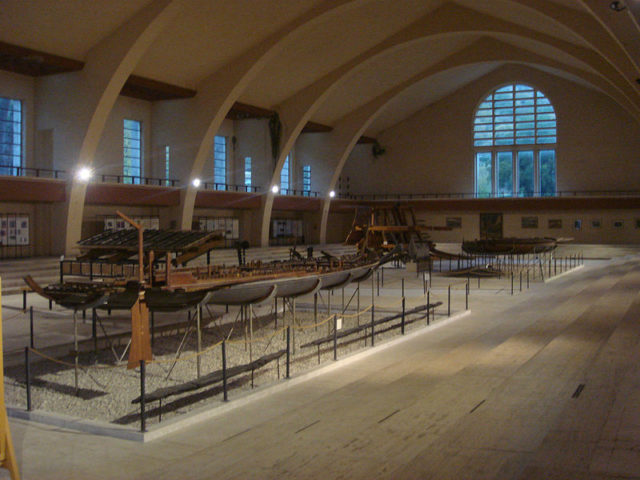
In mid-October 2017, the Italian government held a special ceremony to commemorate the return of the mosaic and other precious artifacts. “The United States has returned to Italy cultural heritage objects that came from illegal excavations or thefts,” said Dario Franceschini, Italy’s culture minister. “Thanks to the investigative work of the Carabinieri, everything will be put back where it came from.”
Caligula, great-grandson of Emperor Augustus and great-nephew of Emperor Tiberius, came to power in 37 AD at the age of 25. He is known for his sadism and debauchery, marrying one of his own sisters, and for such bizarre actions as declaring himself a living god and for making his horse Incitatus a consul of Rome.
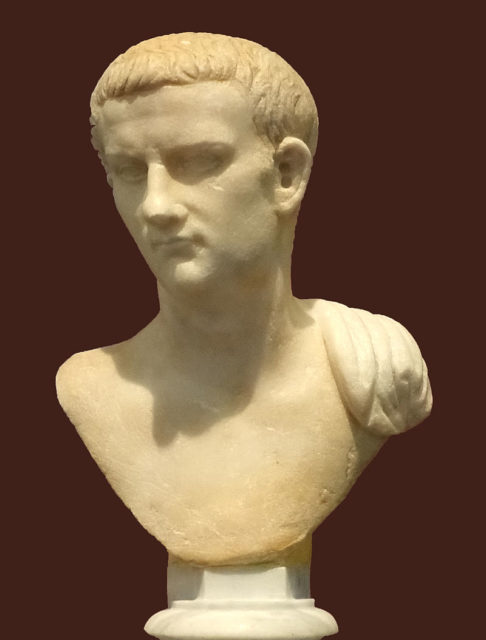
The mosaic in question was part of one of Caligula’s flat-bottomed ships that historians believe he had built to serve as floating palaces for cruising Lake Nemi, near Rome. The 230-foot-long barges reportedly had pink marble columns and mosaic floors as well as heating and plumbing. The Roman historian Seutonius said the barges were adorned with jeweled prows, purple silk sails, and rich sculptures. Lake Nemi, a volcanic lake, had a temple to the goddess Diana on its shores, and it is possible Caligula wished to commune with the goddess on his pleasure barges. Caligula had a special reverence for the Egyptian goddess Isis, and may have seen a connection between Isis and Diana. Without question, the emperor held extended parties on the barges, if not orgies.
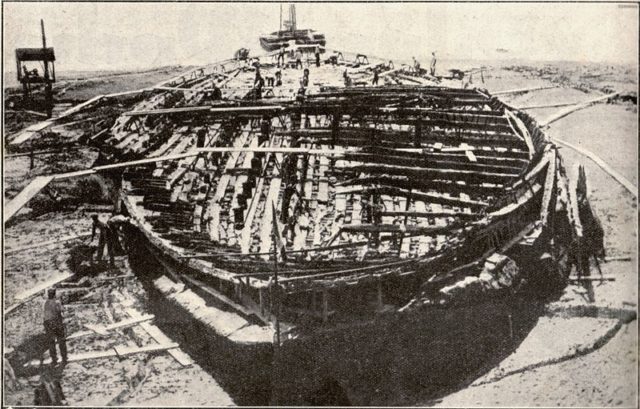
“[The ships] functioned as artificial floating islands, where the emperor could retreat, being completely separated from the world,” Francesco De Angelis, a professor of art history and archaeology at Columbia University, said in an interview with The New York Times.
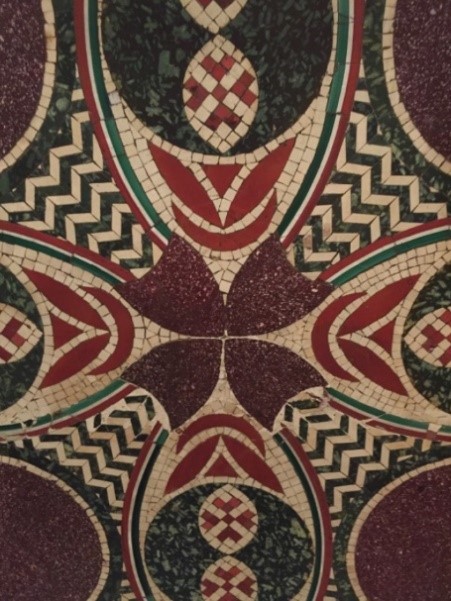
Caligula, feared and detested by almost everyone, was assassinated by his own guards in 41 AD, and the barges were sunk. It wasn’t until the 20th century that they were raised again, after many failed attempts over the centuries. Benito Mussolini ordered the lake drained in order to recover Caligula’s ships, and such a massive effort succeeded: two ships were found in 1932.
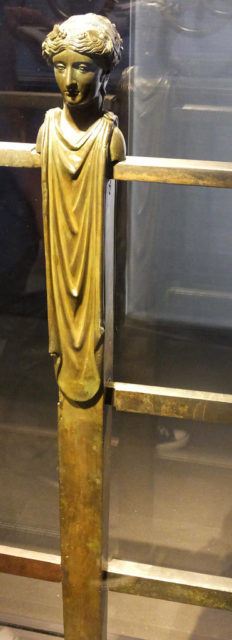
The Ships of Nemi Museum, as it was named, was used as a bomb shelter during the war. Nonetheless, it was hit by U.S. army mortar shells on May 31, 1944, and caught fire. But art experts believe the mosaic in question was removed from the museum before the fire, because it shows no scorching or other damage.
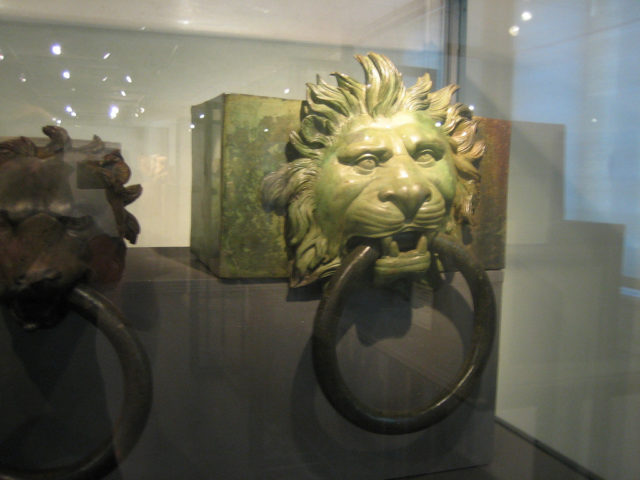
There is still considerable mystery as to who might have removed the mosaic and whose hands it passed through before the Fiorattis bought it. An Italian art expert, Dario De Bufalo, said he saw it in a gallery in Rome in the 1960s and he took a picture. Many years later, when he was promoting his book on Caligula’s use of red stones, he showed the photo in a talk.
It is believed that some in the audience recognized the mosaic as being the coffee table in the Fiorattis’ home. Also, the Park Avenue home was photographed by Architectural Digest, and Italian authorities may have spotted the mosaic at that time.
Fioratti said she no longer has the paperwork for the sale. She gave up the mosaic willingly and is not being charged with any crime.
